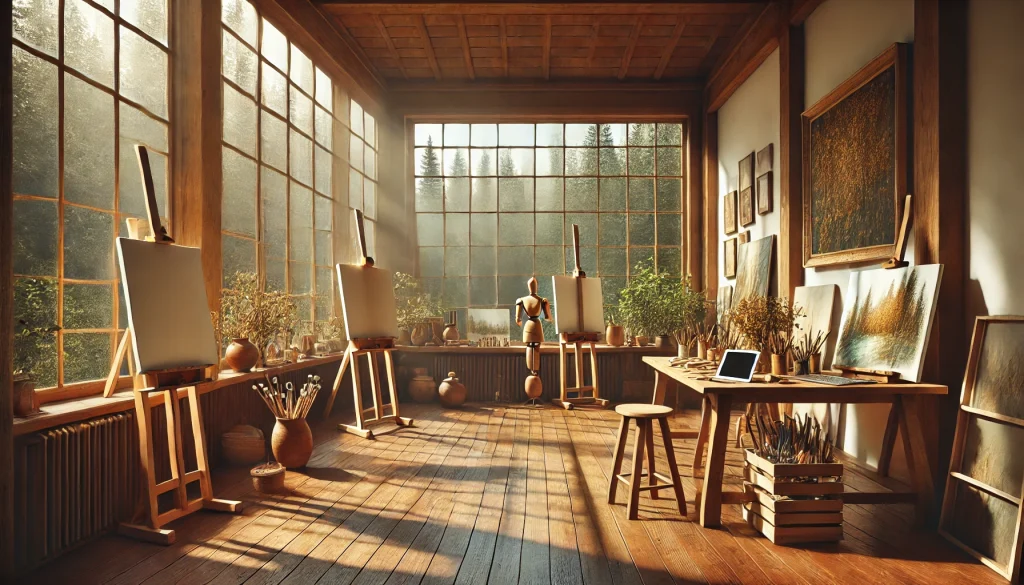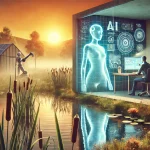
The Creative Revolution: How Generative AI is Transforming the Arts in 2025
Did you know that an AI-generated artwork sold for $432,500 at Christie’s auction house? This staggering figure represents just the beginning of a profound transformation happening across the creative landscape. As generative AI technologies continue to evolve at breakneck speed, they’re reshaping how we create, consume, and think about art in ways that were unimaginable just a few years ago.
In 2025, we’re witnessing a creative renaissance powered by artificial intelligence that’s democratizing creativity while challenging our fundamental understanding of artistic expression. Whether you’re a professional artist, a creative professional concerned about your career, or simply someone fascinated by the intersection of technology and creativity, this revolution will impact you.
What Is Generative AI in the Creative Arts?
Generative AI refers to artificial intelligence systems that can create new content—images, music, text, or other media—based on patterns learned from existing works. Unlike traditional AI that simply analyzes or categorizes information, generative AI actively produces new, original content.
In the creative arts, generative AI manifests in several key technologies:
- Diffusion Models: These start with random noise and gradually refine it into coherent images based on text prompts or other inputs.
- Generative Adversarial Networks (GANs): Systems where two AI models compete—one creates content while the other evaluates it—resulting in increasingly sophisticated outputs.
- Large Language Models (LLMs): AI systems trained on vast text datasets that can generate written content, from poetry to scripts.
The Difference Between Generative Art and AI Art
While often used interchangeably, these terms have distinct meanings:
| Generative Art | AI Art |
|---|---|
| Uses rule-based algorithms and mathematical formulas set by artists | Relies on neural networks and machine learning models |
| Artist directly controls the parameters and rules | Models learn patterns from large datasets with less direct control |
| Has influenced movements like algorithmic art for decades | More recent phenomenon with rapid evolution since 2020 |
| Often evolves in real-time based on data streams or audience participation | Typically generates static outputs based on initial prompts |
What This Means For You: Understanding these distinctions helps you choose the right tools for your creative projects. Generative art offers more control but requires programming knowledge, while AI art tools are more accessible but may produce less predictable results.
How AI is Transforming Visual Arts in 2025
The Rise of AI Art Generators
AI art generators have become sophisticated tools that turn text descriptions into stunning visual masterpieces. The most prominent platforms include:
- DALL·E 3: OpenAI’s latest iteration offers advanced text-to-image synthesis with features like outpainting and inpainting.
- Midjourney: Known for photorealistic outputs and style customization.
- Stable Diffusion: An open-source alternative that can be run locally for greater privacy.
According to recent market data, the AI art generation market has grown by over 300% in the past year alone, with more than 45 million people now using these tools regularly.
Pro Tip: When using AI art generators, be specific with your prompts. Include details about style, lighting, composition, and mood to get more precise results.
Redefining Artistic Process and Collaboration
AI is changing how artists work in fundamental ways:
- Ideation and Exploration: Artists use AI to quickly generate variations and explore concepts before committing to final pieces.
- Technical Assistance: AI handles tedious technical aspects, allowing artists to focus on creative direction.
- Style Expansion: Artists can experiment with styles outside their comfort zone.
“AI doesn’t replace the artist—it expands what’s possible. It’s like having an infinitely patient assistant who can help you visualize your ideas instantly.” — Maya Rodriguez, Digital Artist and AI Consultant
The Music Industry’s AI Revolution
AI-Powered Music Creation and Production
The music industry is experiencing a similar transformation through AI technologies that:
- Generate compositions based on text descriptions or musical samples.
- Automate mixing and mastering processes that once required expensive studio time.
- Create unique soundscapes through timbre transfer and style adaptation.
AI in Writing and Storytelling
AI is transforming written creative expression through:
- Story generation and plot development.
- Character creation and dialogue writing.
- Poetry and lyric composition.
What This Means For You: Writers can use AI to overcome writer’s block, generate plot ideas, or explore alternative narrative directions.
Ethical Considerations and Challenges
Copyright and Ownership Issues
- Training data concerns: Most AI models are trained on existing creative works, often without explicit permission.
- Ownership of outputs: Who owns an AI-generated artwork—the developer, the user, or the artists whose work trained the model?
- Legal frameworks lagging: Copyright laws are still catching up to these new technologies.
The Human Element in AI Creativity
“The most compelling art comes from a place of authentic human experience. AI can mimic styles and patterns, but it can’t create from a place of genuine emotion or lived experience.” — Dr. Sarah Chen, Professor of Digital Arts at Stanford University
The Future of AI and Creativity
Emerging Trends to Watch
- Multimodal AI Models: Systems that blend diverse data types (images, text, audio) to create immersive, multi-sensory works.
- AI-Powered Autonomous Agents: Creative agents that can generate content with minimal human intervention.
- Personalized Creative Experiences: AI that adapts creative content to individual preferences and contexts.
- Ethical AI Development: Growing emphasis on responsible AI that respects copyright and promotes transparency.
Conclusion: Embracing the Creative AI Revolution
Generative AI is not just changing how creative work is produced—it’s expanding who can participate in creative expression. By lowering technical barriers and automating routine aspects of creative work, AI is democratizing creativity in unprecedented ways.
Three Action Steps to Take Today:
- Experiment with at least one AI creative tool in your field to understand its capabilities.
- Join an online community focused on AI and creativity to stay current with rapid developments.
- Reflect on the uniquely human elements you bring to your creative work that AI cannot replicate.
The creative revolution is here—how will you participate?


